+Search query
-Structure paper
| Title | FusC, a member of the M16 protease family acquired by bacteria for iron piracy against plants. |
|---|---|
| Journal, issue, pages | PLoS Biol, Vol. 16, Issue 8, Page e2006026, Year 2018 |
| Publish date | Aug 2, 2018 |
 Authors Authors | Rhys Grinter / Iain D Hay / Jiangning Song / Jiawei Wang / Don Teng / Vijay Dhanesakaran / Jonathan J Wilksch / Mark R Davies / Dene Littler / Simone A Beckham / Ian R Henderson / Richard A Strugnell / Gordon Dougan / Trevor Lithgow /   |
| PubMed Abstract | Iron is essential for life. Accessing iron from the environment can be a limiting factor that determines success in a given environmental niche. For bacteria, access of chelated iron from the ...Iron is essential for life. Accessing iron from the environment can be a limiting factor that determines success in a given environmental niche. For bacteria, access of chelated iron from the environment is often mediated by TonB-dependent transporters (TBDTs), which are β-barrel proteins that form sophisticated channels in the outer membrane. Reports of iron-bearing proteins being used as a source of iron indicate specific protein import reactions across the bacterial outer membrane. The molecular mechanism by which a folded protein can be imported in this way had remained mysterious, as did the evolutionary process that could lead to such a protein import pathway. How does the bacterium evolve the specificity factors that would be required to select and import a protein encoded on another organism's genome? We describe here a model whereby the plant iron-bearing protein ferredoxin can be imported across the outer membrane of the plant pathogen Pectobacterium by means of a Brownian ratchet mechanism, thereby liberating iron into the bacterium to enable its growth in plant tissues. This import pathway is facilitated by FusC, a member of the same protein family as the mitochondrial processing peptidase (MPP). The Brownian ratchet depends on binding sites discovered in crystal structures of FusC that engage a linear segment of the plant protein ferredoxin. Sequence relationships suggest that the bacterial gene encoding FusC has previously unappreciated homologues in plants and that the protein import mechanism employed by the bacterium is an evolutionary echo of the protein import pathway in plant mitochondria and plastids. |
 External links External links |  PLoS Biol / PLoS Biol /  PubMed:30071011 / PubMed:30071011 /  PubMed Central PubMed Central |
| Methods | SAS (X-ray synchrotron) / X-ray diffraction |
| Resolution | 1.9 - 2.7 Å |
| Structure data | 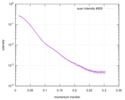 SASDD27: The ferredoxin protease, FusC, E83A mutant + 50 µM Arabidopsis ferredoxin  SASDD37: The ferredoxin protease, FusC, E83A mutant + 70 µM Arabidopsis ferredoxin  SASDD47: The ferredoxin protease, FusC, E83A mutant + 100 µM Arabidopsis ferredoxin 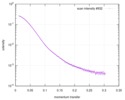 SASDD57: The ferredoxin protease, FusC, E83A mutant + 150 µM Arabidopsis ferredoxin  SASDD67: The ferredoxin protease, FusC, E83A mutant + 200 µM Arabidopsis ferredoxin 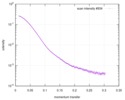 SASDD77: The ferredoxin protease, FusC, E83A mutant + 300 µM Arabidopsis ferredoxin 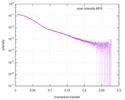 SASDDQ6: The ferredoxin protease, FusC (Ferredoxin Protease, FusC) 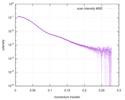 SASDDR6: The ferredoxin protease, FusC, E83A mutant (Ferredoxin protease E83A mutant, FusC E83A)  SASDDS6: The ferredoxin protease, FusC, with Arabidopsis ferredoxin (co-SEC-SAXS) 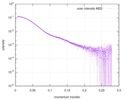 SASDDT6: The ferredoxin protease, FusC, E83A mutant with Arabidopsis ferredoxin (co-SEC-SAXS)  SASDDU6: The ferredoxin protease, FusC, E83A mutant (Ferredoxin protease E83A mutant, FusC E83A) 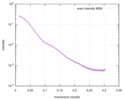 SASDDV6: The ferredoxin protease, FusC, E83A mutant + 3 µM Arabidopsis ferredoxin  SASDDW6: The ferredoxin protease, FusC, E83A mutant + 5 µM Arabidopsis ferredoxin  SASDDX6: The ferredoxin protease, FusC, E83A mutant + 10 µM Arabidopsis ferredoxin  SASDDY6: The ferredoxin protease, FusC, E83A mutant + 20 µM Arabidopsis ferredoxin  SASDDZ6: The ferredoxin protease, FusC, E83A mutant + 30 µM Arabidopsis ferredoxin  PDB-6b03:  PDB-6b05:  PDB-6brs: |
| Chemicals |  ChemComp-HOH:  ChemComp-ZN:  ChemComp-PO4:  ChemComp-HG: |
| Source |
|
 Keywords Keywords | HYDROLASE / M16 Protease / Ferredoxin cleavage / Iron Acquisition / Ferredoxin Binding |
 Movie
Movie Controller
Controller Structure viewers
Structure viewers About Yorodumi Papers
About Yorodumi Papers



 pectobacterium atrosepticum scri1043 (bacteria)
pectobacterium atrosepticum scri1043 (bacteria)
